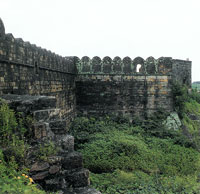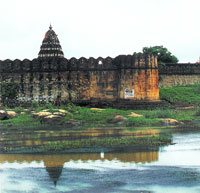Amarnath is regarded as one of principal Hindu Dhams. The holy cave is the residence of the holy trinity, Shiva lord. The guard of the absolute, lord Shiva, the destroyer, is present in the form of ice Lingam in this cave located at a more remote end of the valley of Lidder. This lingam is made naturally of a stalagmite of ice which awakes and weakens with the moon.
The trek to Amarnath yatra begins at Srinagar on the panchami day of the bright half of the month. The next halt enroute is Pampur, 9 miles south east of Srinagar. Subsequent halts are at Avantipur, Brijbihara and Martand. Martand is known for its ancient temple dedicated to the Sun God - now in ruins. Enroute to Martand are Anantnag and Gautamnag. Martand is known as the architectural lion of Kashmir. It is a temple with a colonnade of 84 columns full of artistic work. This temple dates back to Lalitaditya of Kashmir of the 8th century. The next halt is at Aishmukam, and the next is Pahalgam, which is reached on the day of Dasami, the tenth day of the bright half of the month. At Pahalgam is the confluence of the rivers Seshnag and Liddar.
The cave of Amarnath was where Shiva lord reported the secrecy of immortality, Amar Katha with his Wife Parvat. Shiva hesitated initially but finally gave inside.Shiva wanted to reveal the secrecy in a place of isolation far from any life being and thus chose the cave of Amarnath. In preparation, Shiva left his Nandi (the Bull), which he rode at Pahalgam. At Chandanwari, he released the moon from his hair and on the banks of Lake Sheshnag, he released the snakes. Son Ganesha was left at Mahagunas Parvat and at Panjtarni, Shiva left the Five Elements behind - earth, water, air, fire and sky - that make life possible. As a final precaution, Shiva created Rudra named Kalagni and ordered him to set afire and eliminate every living thing in and around the Holy Cave. Finally, Shiva and Parvati entered the Amarnath Cave where he began meditating on a deerskin. He then narrated the Amar Katha to Parvati. Unknown to them, a pair of mating doves eavesdropped on this conversation and learned the secret. Reborn again and again, they have made the cave their eternal abode. Today, pilgrims claim seeing the pair of doves when they trek the arduous route to pay their obeisance at Shivalinga formed naturally of an ice stalagmite.























